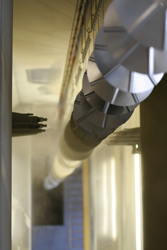Shielding electrical contacts against corrosion
Contact members of metal-metal connectors designed for low voltage and current applications are subjected to fretting wear and corrosion, which in turn affects their durability. In automotive and telecommunication electronic systems, these are mostly made of a metal base coated with a nickel layer on which a thin gold film is deposited. To improve reliability and performance of electrical connectors with a gold outer coating, compounds that bind to the finishing layer and form well-defined monolayers were used in the past. The BILAYER MOLECULAR COATING project partners sought to exploit the outstanding properties of lubricants in the development of an alternative protective treatment for electrical contact materials. Deposition methods of an organothiol monolayer, chemically bound to the metal surface of electrical contacts with an overlying lubricant film was developed at the École supérieure d'électricité (Supélec). The resulting assembly, referred to as a bilayer molecular coating, exhibited a self-healing capacity through a reserve of molecules dissolved within the lubricant layer. Organothiol molecules are capable of reducing ultra-thin layers of metal oxides that could be formed on the surface of gold or other noble coatings, because of fretting or atmospheric corrosion. They migrate from the viscous fluid towards the metal surface to react with metal oxides and yield products that can be rinsed off exposing a clean surface ready for subsequent modification. Bilayer molecular coatings with a supernatant film of perfluoropolyether (PFPE) lubricant could be formatted either in a one- or two-step process. Their quality, however, was found to be dependent on the method of deposition.







